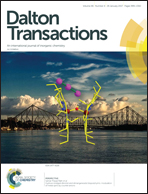Al2O3 coated metal sulfides: one-pot synthesis and enhanced lithium storage stability via localized in situ conversion reactions†
Abstract
Transition metal sulfides with high specific capacity have received increasing research interest in lithium storage. However, the low reversibility of metal sulfides usually leads to the oxidation of Li2S into polysulfides. The dissolution of polysulfides will suppress the regeneration of sulfides due to the loss of Li2S, which usually leads to poor cycling stability of sulfides. Herein, Al2O3 coated Ni3S4 nanoparticles (Ni3S4@Al2O3) have been rationally designed and fabricated via a one-pot hydrothermal process. The regeneration of nickel sulfides, which is the key to cycling stability of sulfides, can be promoted by the localized conversion from metal to metal sulfides because the Al2O3 layer can prevent the diffusion and dissolution of polysulfides. The conversion of Al2O3 to ion-conductive AlF3 can enhance the quick charge transfer process of the lithium ion insertion/extraction reaction. Furthermore, the Al2O3/AlF3 layer can also prevent the growth and aggregation of Ni3S4 nanoparticles to retain the structure of the electrodes during the cycling process. The as-prepared Ni3S4@Al2O3 exhibits a high reversible capacity of 651 mA h g−1 at 500 mA g−1 even after 400 cycles. This method can also be extended to other metal sulfides for improving electrochemical performances.



 Please wait while we load your content...
Please wait while we load your content...